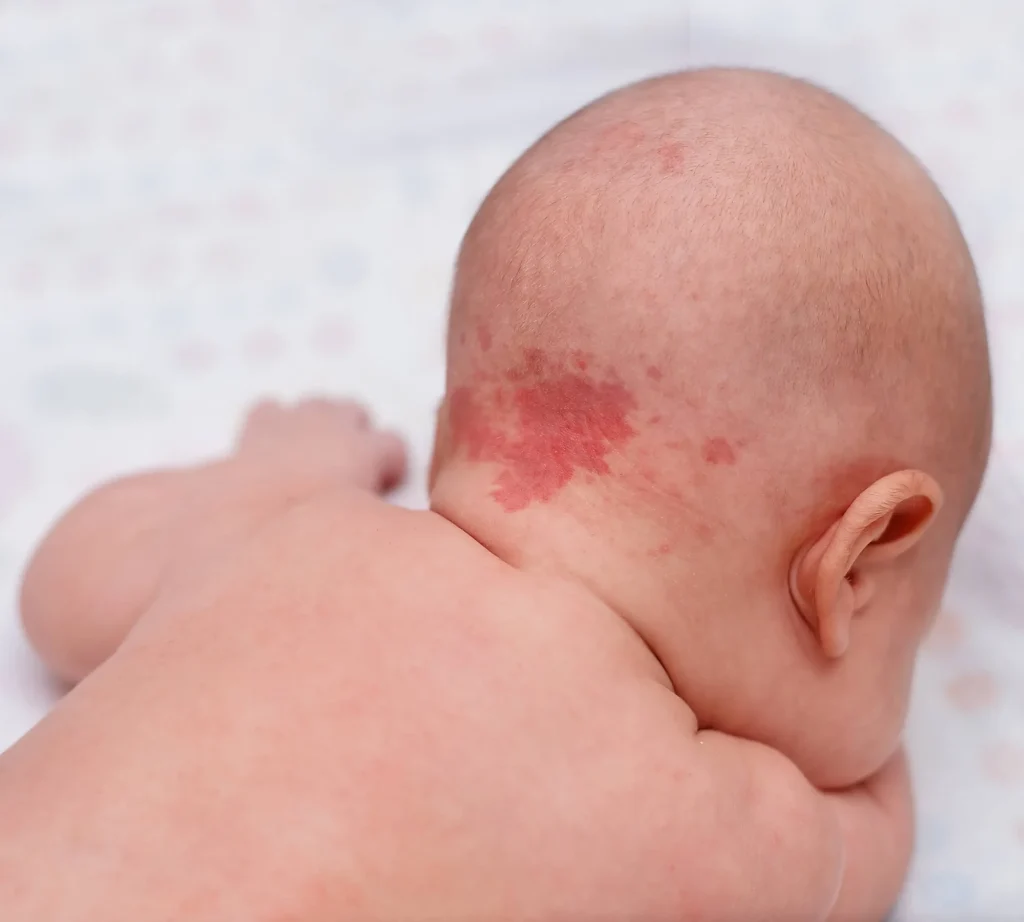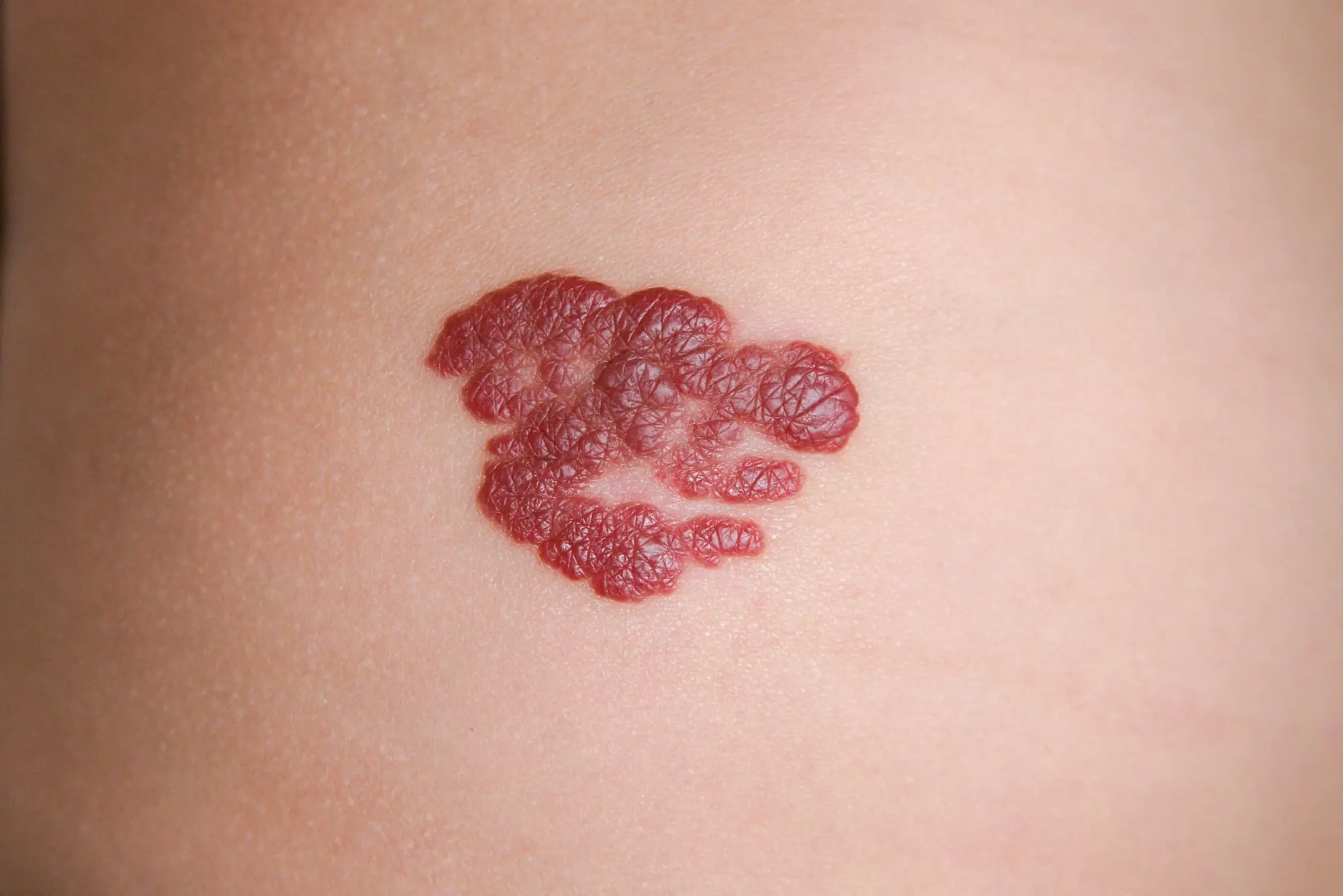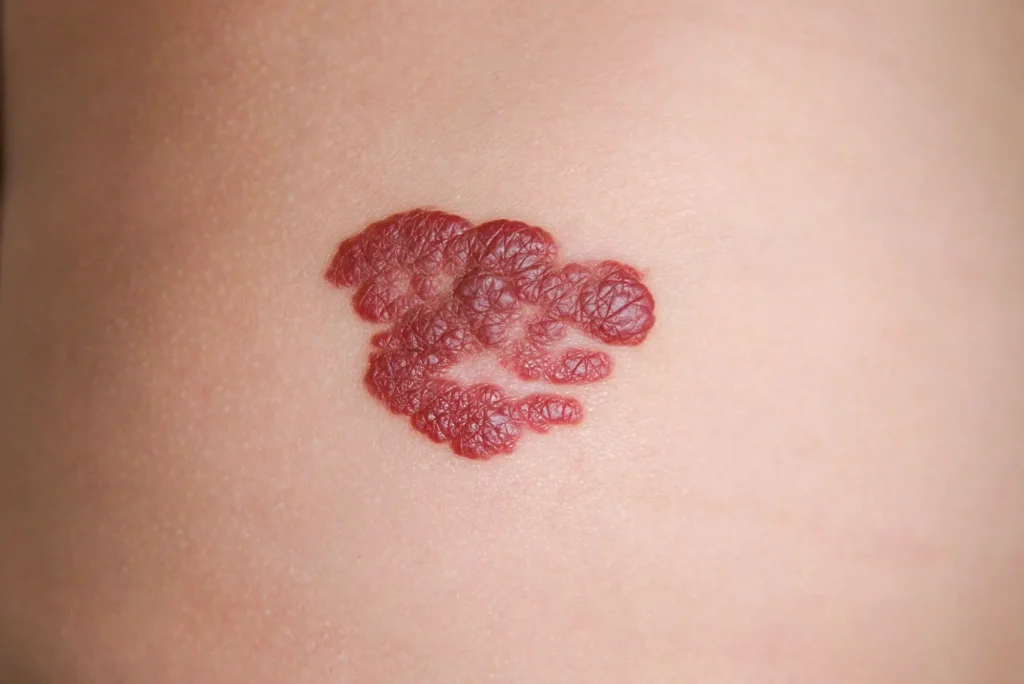Compassionate Care for Hemangiomas in Vienna
Hemangiomas are benign vascular growths that often develop during infancy and can sometimes persist into adulthood. These birthmarks, while generally harmless, may require medical attention if they grow significantly, cause discomfort, or affect functionality. At Dermestetics Vienna, we provide advanced, evidence-based treatments for hemangiomas to ensure effective results and minimal discomfort for our patients.
Whether addressing hemangiomas in infants or managing adult cases, our team prioritizes patient care and tailored treatment approaches to promote overall well-being.

Expert Hemangioma Care Providers
Our experienced team combines specialized knowledge with cutting-edge medical technology to treat hemangiomas of all types. We focus on understanding each patient’s unique needs and providing individualized care. Dermestetics is committed to ongoing education and innovation, ensuring that our patients receive the highest quality of care.


Why Choose Our Hemangiomas Treatments?
Learn More
Consultation Required?
Yes
Duration of Results
Varies based on condition and treatment
Sessions Needed
Depends on the size and type of hemangioma
Downtime
Minimal
What It Treats
Understanding Hemangiomas
Hemangiomas are vascular anomalies that typically appear as red or purplish marks on the skin. While they are most common in infants, they can sometimes be found in older children or adults. Here’s a closer look at the different types and their characteristics:
- Infantile Hemangiomas
- Onset and Growth: These hemangiomas typically appear within the first few weeks of life and are the most common type.
- Growth and Regression: They undergo a rapid growth phase during the first year of life, followed by a slow regression phase that may take several years. By age 5 to 7, most have significantly diminished or resolved.
- Complications: While many resolve without issues, some may ulcerate, bleed, or interfere with vital functions such as vision or breathing, requiring medical intervention.
- Congenital Hemangiomas
- Presence at Birth: Congenital hemangiomas are fully formed at birth and do not exhibit postnatal growth, unlike infantile hemangiomas.
- Behavioral Types:
- Rapidly Involuting Congenital Hemangiomas (RICH): These shrink significantly during the first year of life and often resolve completely.
- Non-Involuting Congenital Hemangiomas (NICH): These remain unchanged over time and may require treatment if they cause functional or cosmetic concerns.
- Complicated Hemangiomas
- Impact and Risks: Hemangiomas that develop in critical areas, such as near the eyes, mouth, airway, or internal organs, may obstruct functions like vision, breathing, or feeding.
- Treatment Necessity: Due to the potential for serious complications, these often require prompt medical or surgical intervention, which can include beta-blockers, laser therapy, or surgical excision.
- Superficial Hemangiomas
- Location and Appearance: These hemangiomas are found on the skin’s surface and are often bright red and raised, resembling a strawberry mark.
- Complications and Treatment: They rarely cause problems and often resolve naturally. However, larger or strategically located superficial hemangiomas may need monitoring or treatment for cosmetic or functional reasons.
- Deep Hemangiomas
- Location and Appearance: These are located beneath the skin and may appear as bluish or skin-colored swellings.
- Growth and Risks: Deep hemangiomas may grow larger and compress surrounding tissues or organs, especially if located near critical areas, necessitating closer monitoring and potential treatment.
- Mixed Hemangiomas
- Combination Features: Some hemangiomas exhibit both superficial and deep characteristics, with both bright red surface areas and bluish subcutaneous components.
- Treatment Needs: Mixed hemangiomas may require individualized treatment plans based on the extent of their growth and the areas they affect.
- Diagnosis and Monitoring
- Diagnosis: Hemangiomas are typically diagnosed through physical examination, but imaging studies like ultrasound or MRI may be required for deeper or more complex lesions.
- Monitoring: Most hemangiomas are self-limiting and monitored without immediate treatment. Regular follow-ups ensure that complications, if any, are addressed promptly.
Treatment Options
Treatment varies based on the type, location, and potential complications of the hemangioma:
- Observation: Many hemangiomas, particularly those that are small and non-complicated, are left to resolve naturally.
- Medication: Beta-blockers, such as propranolol, are highly effective for reducing the size and redness of hemangiomas during their growth phase.
- Laser Therapy: Used to address ulcerated hemangiomas or reduce residual redness after regression.
- Surgery: Surgical removal may be necessary for hemangiomas that interfere with critical functions or fail to respond to other treatments.
Hemangiomas in Children
While many hemangiomas in children are harmless and resolve without treatment, some may require medical attention, particularly if they are:
- Large or rapidly growing
- Causing discomfort or pain
- Located near the eyes, nose, mouth, or other sensitive areas
- Ulcerated, leading to infection risks
At Dermestetics, we understand the importance of early and effective intervention in children. Our team works closely with families to ensure treatments are safe, gentle, and effective, prioritizing the health and comfort of your child.

How Our Treatment Process Works
How Our Treatment Process Works
Our Comprehensive Approach to Hemangioma Treatment in Vienna
When you visit Dermestetics, our care process begins with a thorough consultation. We assess your medical history, conduct a detailed evaluation of the hemangioma, and discuss your goals and concerns. Using advanced diagnostic tools, we create a treatment plan tailored to your needs.
How is the treatment plan developed?
Each plan is customized based on the type, size, and location of the hemangioma. Options may include laser therapy, topical treatments, or minimally invasive procedures.
How long will treatment take?
The duration depends on the hemangioma’s characteristics and the selected treatment method. Improvement is typically seen within a few weeks to months.
Are you a good candidate for hemangioma treatment?
You may be a candidate if:
- The hemangioma is causing functional issues or discomfort
- You or your child experience complications such as ulceration or infection
- You prefer treatment to minimize its appearance
How We Monitor Progress
We track treatment effectiveness using high-resolution imaging, regular check-ups, and patient feedback. This approach allows us to adjust the treatment plan as needed and ensure optimal results.
Complementary Treatments
To enhance your treatment outcomes, we offer additional options:
Get Started
Ready to take the first step toward hemangioma care?


















